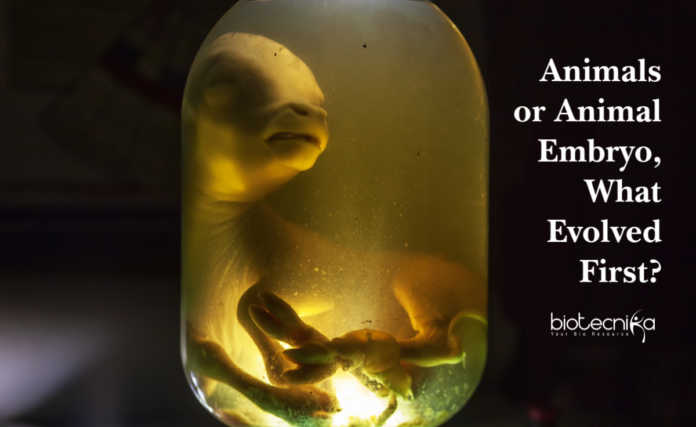Animal Embryos Found in Fossil.
Animals or Embryos, what evolved first?
Scientists have discovered animal-like embryos in the fossil record. An international research team of scientists from the Nanjing Institute of Geology and Palaeontology and the University of Bristol uncovered that in the fossil record, animal-like embryos evolved long before the first animals appeared.
Before animals became more diverse into 30 or 40 distinct anatomical designs, they initially evolved from single-celled ancestors. The debate on how and when the transition of animals from single-celled microbes to complex multicellular organisms occurred has always been an intense topic.
So far, to answer this question, studies have been made only on living animals and their relatives. Now, this team of scientists have taken a different approach and have found key evidence in this major evolutionary transition. They found that this transition happened long before fin
ding complex animals in fossil records and that the answer can be found in the fossilized embryos which resemble the multicellular stages of the single-celled animal relative’s life cycle.Fossil named Caveasphaera was discovered in 609 million years old rocks, found at the Guizhou Province of South China. The fossils of individual Caveasphaera are just about half a millimeter in diameter. But in-depth they were preserved till their component cells, which was revealed by using X-ray microscopy.
“The working of X-Ray tomographic microscopy is just like a medical CT scanner, with the added benefit of allowing us to features of about less than a thousandth of a millimeter in size,” says Kelly Vargas, from the University of Bristol’s School of Earth Sciences.
From the Nanjing Institute of Geology and Palaeontology in China, the Co-author of this study, Zongjun Yin says, “From our study results, just like in animals and humans, Caveasphaera sorting its cells during embryo development could be observed, but we did not get evidence that these embryos develop into more complex organisms.”
Another Co-author from the University of Bristol, Dr. John Cunningham says, “Caveasphaera life cycle was similar to the close living relatives of animals, alternating between single-celled stages and multicellular stages. However, going a step further, Caveasphaera recognizes those cells during embryology.”
Stefan Bengtson, the Co-author from the Swedish Museum of Natural History says, “This study gives us the earliest evidence of the crucial step in the evolution of animals found in Caveasphaera allowing them to develop distinct organs and tissue layers.”
Another Co-author from Nanjing Institute of Geology and Palaeontology, Maoyan Zhu said that he is not completely certain about Caveasphaera being an animal. He said that the Caveasphaera looks very similar to the embryos of some starfish and corals and they could not find the adult stages mainly because it was hard to fossilize them.
Dr. Federica Marone, co-author from the Paul Scherrer Institute in Switzerland says, “Amazing details from this study can be preserved in the fossil record but adding to this was the potential of X-ray microscopes which could uncover the secrets preserved in the stones without causing any damage to the fossils.”
Professor Philip Donoghue, another co-author from the University of Bristol’s School of Earth Sciences, says “Features looking both like early embryos of primitive animals and the microbial relatives of animals could be seen in Caveasphaera. We are still on the hunt to find more fossils that could help us decide.”
Whichever of two given alternatives, Caveasphaera fossils show animal-like embryos were evolving even before the oldest definitive animals appearing in the fossil record.
This study was funded through the Transitions and Resilience (BETR) program, Biosphere Evolution, co-funded by the Natural Science Foundation of China (NSFC) and Natural Environment Research Council (NERC).
Author : Prathibha HC






























